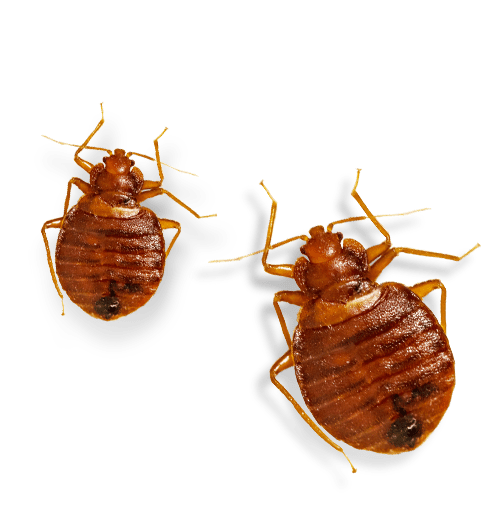Local Bed Bug Exterminator: DC Heat Treatment Providers Available
Wiki Article
Exploring the Science Behind Bed Bug Heat Treatments as a Sustainable Parasite Monitoring Technique
In the realm of bug monitoring, the mission for lasting and efficient solutions continues to be a consistent search. One such method that has actually acquired grip over the last few years is using warm treatments to fight bed pest infestations. By utilizing the science behind thermal fatality points for these relentless insects, heat treatments supply an encouraging option to standard chemical-based strategies. The intricacies of just how warm successfully gets rid of bed insects and the more comprehensive effects for lasting pest monitoring practices make this a topic worth exploring additionally.Bed Insect Warm Treatment Process

Thermal Fatality Factor for Bed Bugs
Revealing bed pests to elevated temperature levels past their thermal tolerance range is crucial for achieving effective obliteration in warm therapy processes. The thermal death point for bed insects refers to the temperature at which these bugs can not endure. Research shows that bed bugs start to die when subjected to temperatures over 113 ° F(45 ° C) for a sustained duration. As the temperature increases, so does the mortality price of bed insects. At around 118 ° F(48 ° C ), bed pests begin to pass away quickly, with a death price of virtually 99% within mins of exposure. This shows the level of sensitivity of bed insects to heats and highlights the performance of warmth treatments in eradicating invasions. By reaching and maintaining temperatures above the thermal death point for bed pests, bug administration professionals can make sure detailed removal of bed pest populations, including hard-to-reach locations where chemical treatments might be much less effective. Understanding the thermal death factor for bed insects is crucial for implementing successful warmth treatment methods and attaining lasting pest administration results.Benefits of Warm Treatments
Having established the essential thermal death factor for bed insects, it is important to currently discover the significant benefits that warm treatments use in efficiently removing these durable pests. One of the main benefits is that warmth can permeate deep right into crevices and cracks where bed insects hide, making certain that even the most hard-to-reach areas are warmed to deadly temperatures.Furthermore, heat therapies are environmentally pleasant and safe, making them a sustainable pest monitoring strategy. Unlike chemical pesticides, heat therapies do not leave dangerous deposits that can position dangers to human health or the atmosphere. This aspect is specifically crucial in delicate settings such as medical facilities, schools, and houses where chemical use may not be preferable.
Furthermore, warmth treatments have a high success rate in eliminating bed insect infestations in a solitary therapy, decreasing the need for several visits and reducing disturbance to passengers. This performance not only saves money and time but additionally gives assurance to those managing bed bug troubles.
Performance of Heat Treatment

Study researches have actually regularly shown the efficiency of warm treatments in accomplishing a high rate of bed insect death. Effectively carried out heat therapies can reach all the splits and holes where bed pests may be nurturing, guaranteeing a detailed approach to extermination. Warm therapies have actually the included benefit of killing bed insect eggs, which are usually immune to conventional chemical treatments. Generally, the performance of heat treatments in eliminating bed insect problems makes them a trustworthy and lasting pest administration method.
Lasting Insect Monitoring Benefits
Implementing sustainable pest management methods uses lasting benefits for both the setting and public health and wellness. By making use of approaches such as warmth treatments for bug control, we can reduce the reliance on damaging chemical pesticides that can have unfavorable impacts on ecological communities and human health and wellness - exterminator. Lasting insect administration strategies help in maintaining resource biodiversity by targeting particular pests without hurting non-target microorganisms, therefore keeping a balanced environment
Furthermore, sustainable pest administration methods contribute to the overall wellness and wellness of the general public. By decreasing direct exposure to hazardous chemicals used in conventional insect control methods, warm treatments provide a much safer choice for insect administration in residential, business, and public spaces. This decrease in chemical use likewise aids in avoiding pesticide deposits from infecting air, dirt, and water, protecting ecological quality.
Verdict
In conclusion, bed insect warmth treatments have actually been revealed to be a effective and lasting bug management method. The thermal fatality point for bed insects makes them at risk to heat treatments, which have countless advantages over standard chemical treatments. The efficiency of warm therapies in removing bed bug infestations while lessening ecological impact highlights the potential of this approach as a sustainable service for bug control.The bed pest warmth treatment process involves elevating the temperature within ravaged areas to a level that efficiently gets rid of bed insects and their eggs. By getting to and keeping temperature levels over the thermal death point for bed insects, insect administration experts can make sure detailed removal of bed insect populations, consisting of hard-to-reach locations where chemical therapies might be much less efficient. One of the main advantages is that warm can permeate deep into cracks and holes where bed insects hide, guaranteeing that even the most hard-to-reach areas are warmed to dangerous temperature levels. Unlike chemical therapies that might leave behind immune populaces, warm treatments offer a safe and eco pleasant option that can permeate deep into furnishings, wall surfaces, and other hard-to-reach areas where my response bed bugs conceal.
The thermal death point for bed insects makes them vulnerable to heat therapies, which have many advantages over conventional chemical treatments.
Report this wiki page